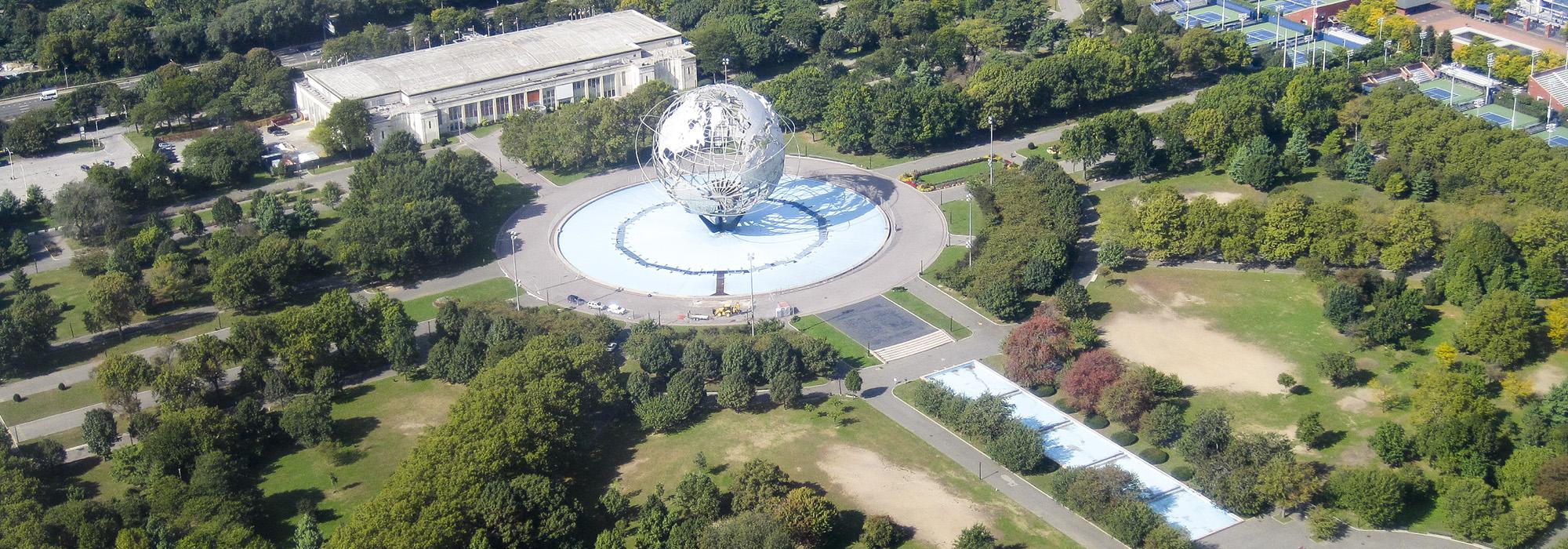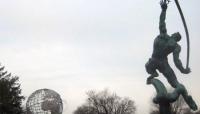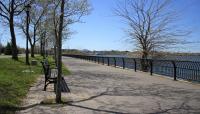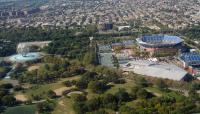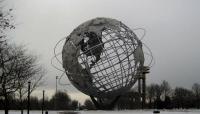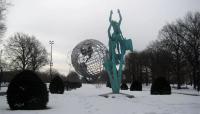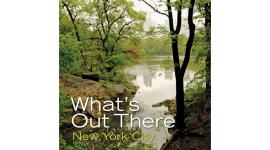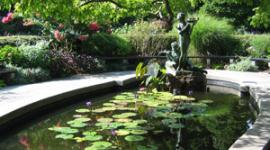Landscape Information
Home of the World’s Fairs of 1939-1940 and 1964-1965, the land was transformed from a hilly ash dump into a suitable site for the Fair. Greatly influenced by Parks Commissioner Robert Moses, the Fair’s central design was completed by Gilmore Clarke, a member of the World’s Fair Design Committee and frequent Moses collaborator. Originally Clarke designed a grand, extended reflecting pool, with the Trylon and Perisphere as the main focal points with tree-lined paths emanating symmetrically from this point of origin. These signature focal elements were replaced by the Unisphere for the second World’s Fair, with the original paths retained. The Unisphere, a steel model globe designed by Clarke, symbolized the second Fair’s theme, “Peace through understanding in a shrinking globe and in an expanding universe.” At the paths’ terminus are sculptures and buildings, including Freedom of the Human Spirit 1964, by Marshall Fredericks, the Queens Museum of Art, the former New York State building from 1964, and the New York State Pavilion designed by Philip Johnson. The creation of the World’s Fair grounds led to the establishment of Flushing Meadows Corona Park, at 1,255 acres the borough’s largest park.



